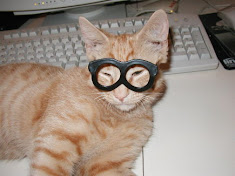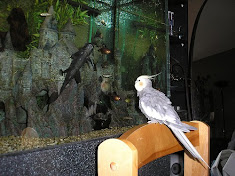It was often thought that the bigger the aquarium the easier it would be to keep the water parameters stable. You could not keep corals alive without a massive trickle filter, large efficient protein skimmer, and powerful metal halide lighting lights. The bigger the aquarium the more gadgets you could add to make the water quality pristine, from ozone generators, redox meters, ph controllers, and calcium reactors. You had to be a marine biologist and a chemist to maintain a coral reef aquarium. The nano reef aquarium would seem to go against all these principles. Can we really keep corals alive in a 10 gallon aquarium with no sump filter or a protein skimmer?
 |
| A Young Nano Reef Aquarium by Guilherme Morais |
The best products to maintain calcium, strontium and other trace elements are made from aragonite, such as AragaMilk from CaribSea. So what is aragonite? Aragonite is fossilized coralline algae that has extracted minerals from the ocean to grow. Grinding aragonite into a fine powder and adding water creates a milky substance that precipitates quickly adding these minerals to the water naturally. Add a few drops to top off water to maintain calcium levels at 450 ppm. You will be amazed at the growth rate of SPS corals. Yes I did say SPS corals that can be easily maintained in a nano reef aquarium.
Fish For The Nano Reef Aquarium
Fish are a great addition to a nano reef, but you must take extra care of you nano. You will have to be sure to keep up with your water changes, because a small body of water can collect nitrates quickly. The following fish are nano reef safe: anthius, true and false percula, banggai cardinals, pajama cardinals, royal grammas, fire fish, clown gobies, pseudochromis, basslets, and most damsels. While you are not limited to just those fish, these are hardy and good for beginners. Keep the number small from 1 to 5 fish depending on the nano aquarium size.
Cleanup Crews For The Nano
A good cleanup crew will keep your nano reef running smooth, and free from algae, detritus, and other unwanted wastes. Commonly kept cleanup crew critters are red leg hermits, red tip hermits, sand sifter starfish, sand sifter gobies, turbo snails, and astrea snails.
Corals For the Nano Reef
There are may corals that are compatible with the nano tank. Soft corals would include zooanthids, zenias, star polops, and mushroom anemonies. Lps corals would include Fox Coral and Blastomusa. SPS corals do well with metal halide lighting. Acroporas and montiporas are the easiest to grow in a 24-29 gallon nano aquarium. SPS coral frags are the way to go in a nano reef. They are much cheaper and easier to ship. The benefits of buying corals online is the greater variety that cannot be found at your local pet store. Buying several items from the same seller can reduce shipping costs. Simply use some Marineland's Hold Fast, which is a two part epoxy similar to plumbers epoxy, to glue the coral frag to a live rock. Be sure to give them plenty of space for growth.
Author Resource: Written by RC Moore
Content writer for reefkeepingfever.com
For more information visit reefkeepingfever.com
Article Source: http://www.articlesbase.com/pets-articles/nano-reef-aquarium-340648.html



0 comments:
Post a Comment